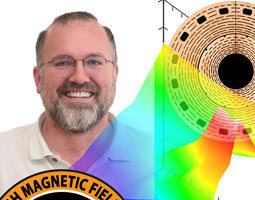Name Gregory Boebinger | ||
 | ||
Gregory Scott Boebinger is the director of the National High Magnetic Field Laboratory in Tallahassee, Florida and a professor of physics at Florida State University. The National High Magnetic Field Laboratory is a three-campus user facility, home to six user programs in physics, chemistry and biology, and a world leader in the study of high magnetic fields.
Contents
Biography
Boebinger was born June 29, 1959 in Indianapolis, Indiana, one of four sons of a minister and an elementary-school teacher. He is a 1977 graduate of North Central High School in Indianapolis. He married his high-school sweetheart; they have three children.
He simultaneously earned three bachelor's degrees - in physics, philosophy and electrical engineering - from Purdue University in 1981. With a Churchill Scholarship, he traveled to the Cambridge University for one year of research under Professor Sir Richard Friend, studying the temperature dependent structural changes in one-dimensional organic superconductors.
His 1986 doctorate in physics came from the Massachusetts Institute of Technology. There, he held Compton and Hertz Foundation fellowships. His work involved experiments with high-powered magnets at the MIT Francis Bitter Magnet Laboratory, and it was there he became a graduate assistant for two scientists who would later win the 1998 Nobel Prize in Physics: Horst Ludwig Störmer, then of Bell Laboratories, and Daniel Tsui, then a professor at Princeton University. His thesis research utilized high magnetic fields and ultra-low temperatures to study fractional quantum Hall effect. He spent a year as a NATO Postdoctoral Fellow in Paris at the Ecole Normale Supérieure studying other quantum behaviors of electrons in quantum wells.
In 1987, Boebinger joined the research staff at Bell Laboratories and established a unique pulsed magnetic field facility for physics research on semiconductors, f-electron compounds and superconductors in magnetic fields up to 60 tesla. For this research, he was named a Fellow of the American Physical Society in 1996.
In 1998, Boebinger became head of the Pulsed Field Facility at Los Alamos National Laboratory, one of the three campuses of the National High Magnetic Field Laboratory. There he continued his research on high-temperature superconductors, using the intense pulsed magnetic fields to suppress superconductivity. He also did a stint as deputy director for Science Programs in the Division of Material Science and Technology.
In 2004, he moved to Florida State University to become director of the Magnet Lab, with responsibility for the lab's programs at all three campuses: Florida State University, Los Alamos National Laboratory, and the University of Florida. His research continues to focus on high-temperature superconductivity and he maintains laboratories and close collaborations with colleagues at Los Alamos National Laboratory. He has lobbied the scientific community to build a unique, world-class laser - dubbed Big Light - at the 370,000-square-foot (34,000 m2) Magnet Lab. The free-electron laser would span the terahertz-to-visible-light part of the electromagnetic spectrum, probing a blind spot that scientists have yet to fully explore. The 4th-generation light source would be housed in a separate, specially-built facility beside the Mag Lab.
Honors and awards
Fellow of:
